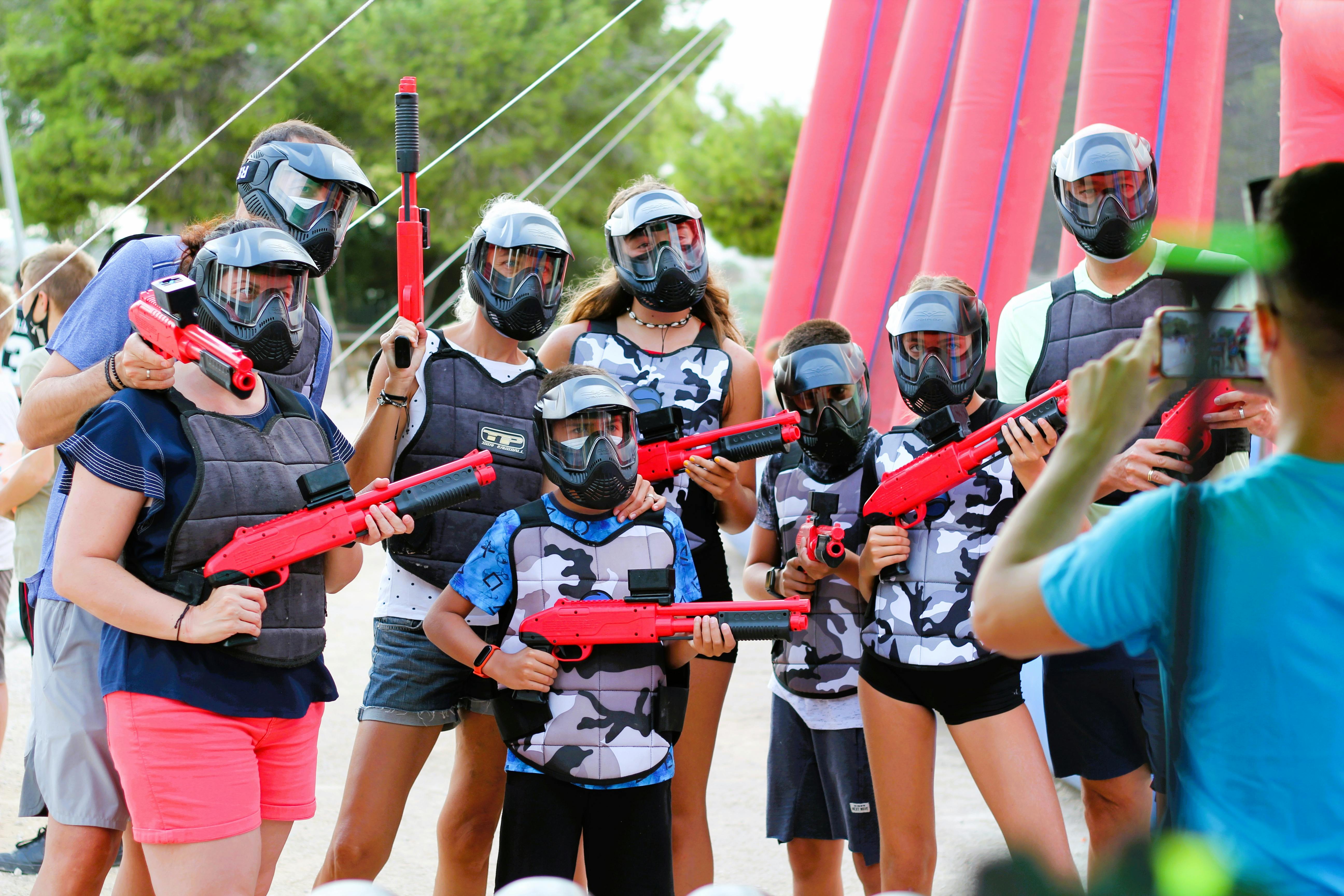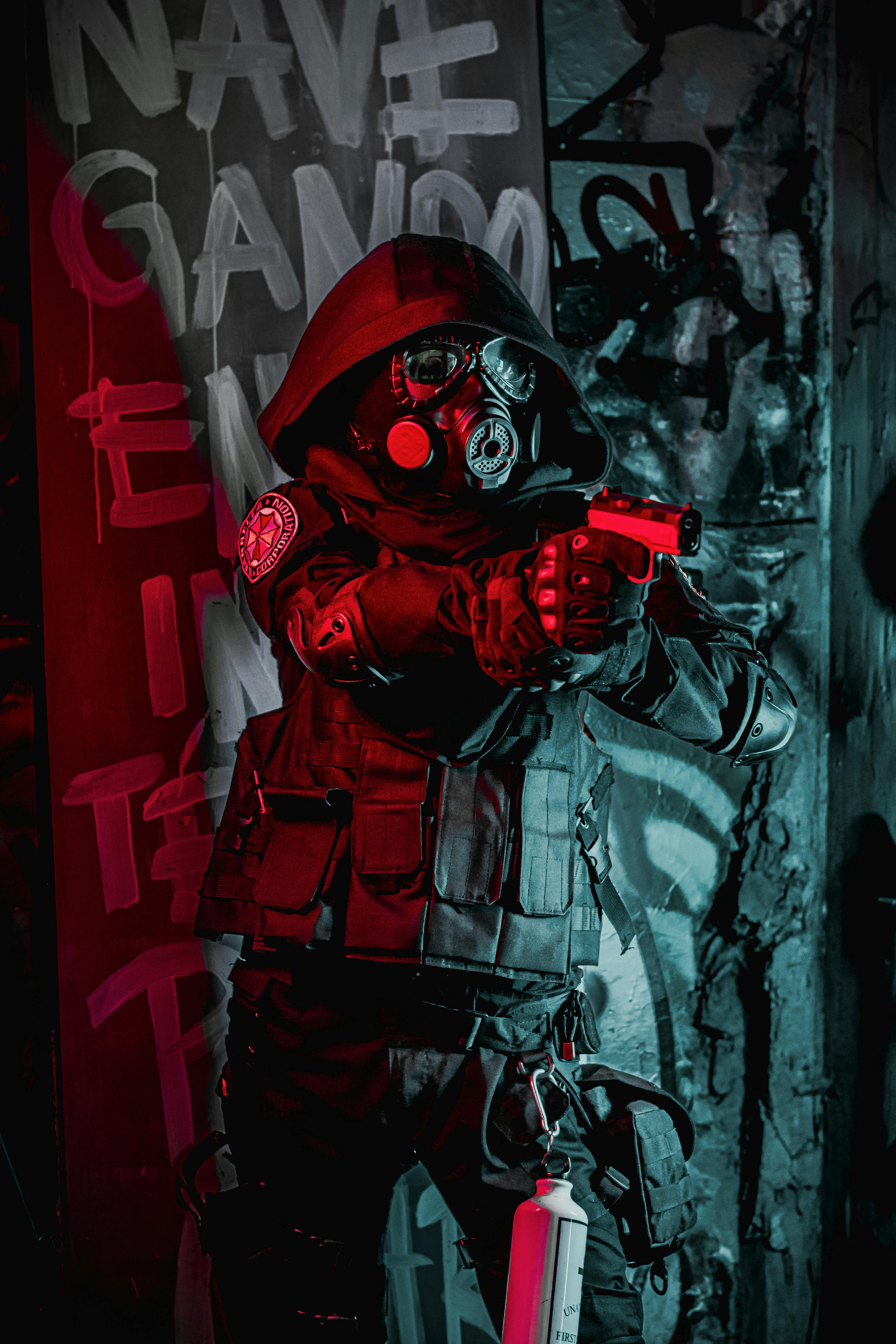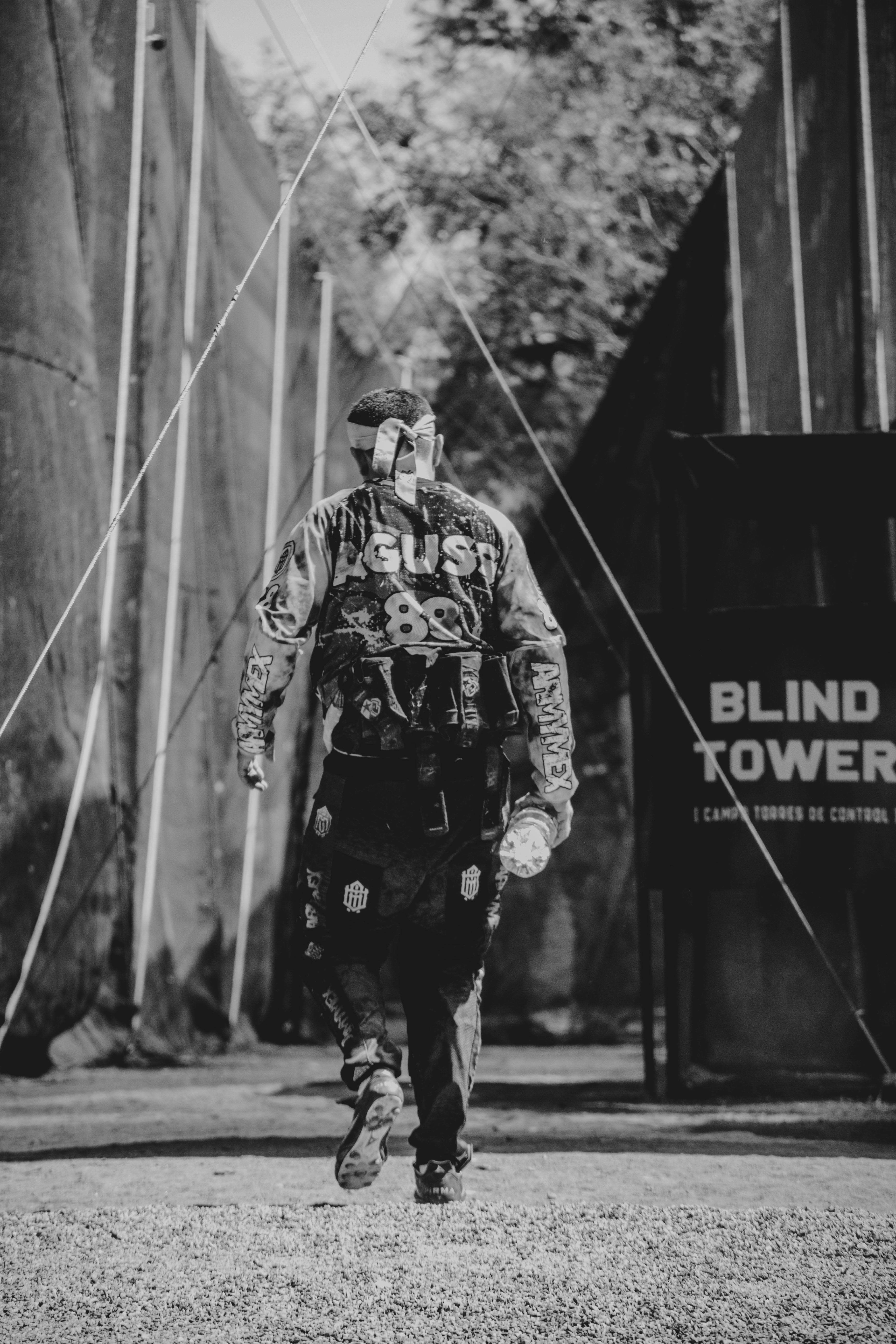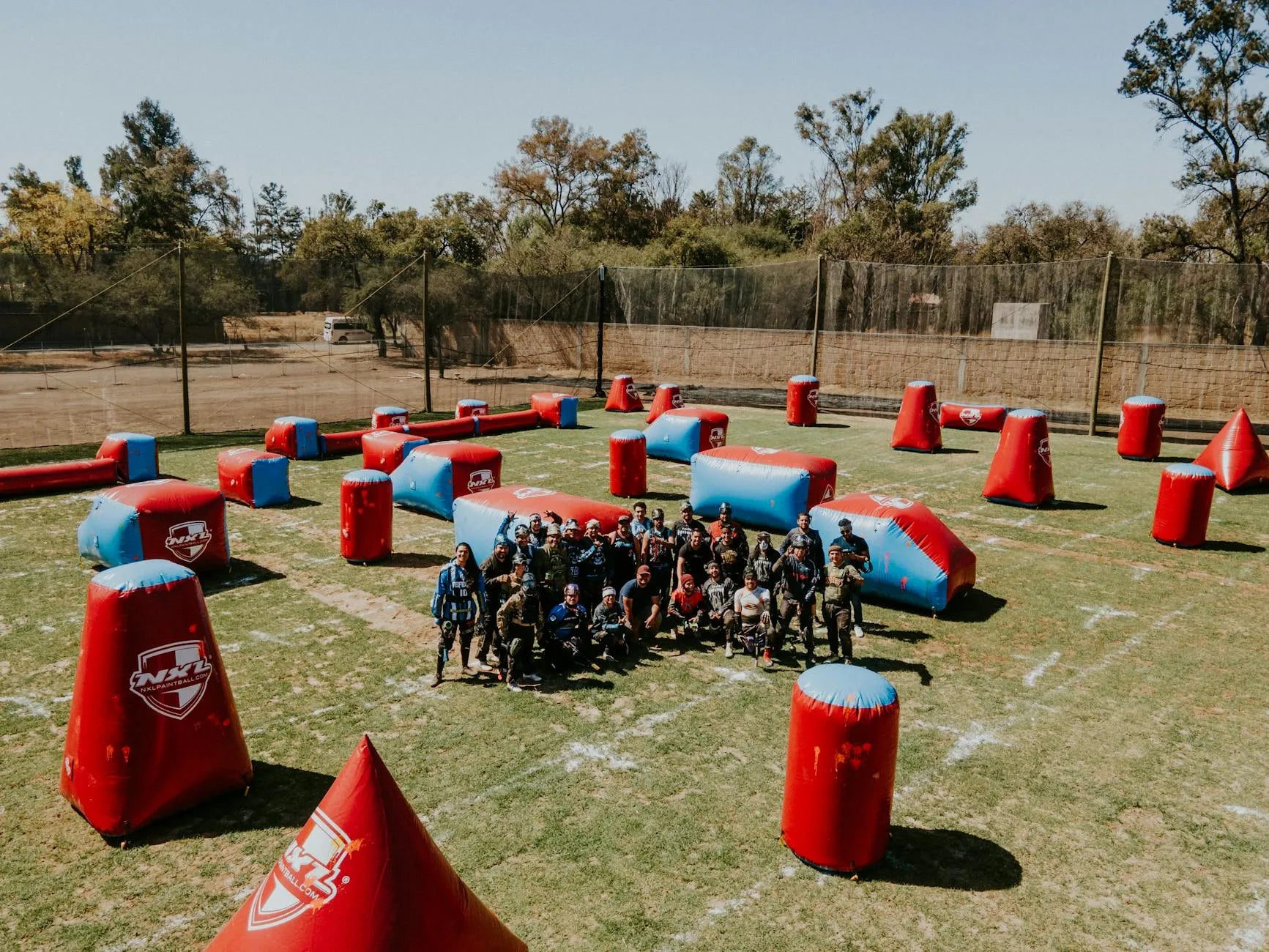How Fast Does a Paintball Gun Shoot 300 FPS Insights Revealed
The first time I felt a paintball hit me at close range, it wasn’t the sting that stuck with me—it was the sound. A wet crack echoed through the Arizona scrubland as a neon yellow splatter bloomed across my chest plate. My opponent’s marker had roared like a chainsaw, its muzzle velocity pushing field limits. In that moment, I understood why how fast a paintball gun shoots isn’t just trivia—it’s the difference between tactical dominance and humiliating surrender.
The Physics of Impact: Why 280-300 FPS Rules the Game
Most recreational fields cap markers at 280-300 feet per second (FPS), a sweet spot balancing safety with effectiveness. At these speeds:
- Paintballs maintain stable flight up to 150 feet
- Impacts deliver a sharp sting (comparable to snapping a rubber band) without breaking skin
- Gelatin shells reliably burst on target
During my rookie year coaching at Desert Edge Paintball, I watched a 12-year-old girl test her new electronic marker. She’d cranked it to 320 FPS without understanding chronograph limits. The first shot shattered against a concrete barrier 20 feet away, spraying her teammate with viscous pink filler. Field marshals descended like hawks, temporarily banning her marker. That lesson sticks with me: velocity without control is just vandalism.

The Accuracy Paradox
Higher FPS doesn’t always mean better accuracy. At 300+ FPS:
- Paintballs flatten slightly during acceleration, creating air resistance inconsistencies
- Spinning rifled barrels induce unpredictable Magnus effects
- Brittle tournament-grade shells risk mid-air disintegration
I learned this the hard way during a 2022 tournament. My Planet Eclipse CS3—tuned to 295 FPS—was lobbing perfect parabolic arcs until humidity thickened. Suddenly, my shots veered left like malformed curveballs. Later, I realized moisture had swollen the paint slightly, altering aerodynamics. Velocity alone couldn’t compensate for environmental variables.

Vision: The Forgotten Velocity Multiplier
Here’s what most players miss: how fast your paintball gun shoots means nothing if you can’t see your target.
During my “Blind Ace” phase, I’d waste entire hoppers spraying at blurry shapes. My prescription glasses fogged relentlessly, warping depth perception. One humid morning in Tulsa, I mistook a referee’s orange vest for an enemy jersey and lit him up like Times Square. The ensuing disqualification cost my team regional rankings.
That changed when I tried Overo Glasses’ prescription goggle inserts. Their anti-fog CR39 lenses delivered:
- 180° distortion-free sight
- Instant target acquisition at 100+ feet
- No more double-layered eyewear shifting during dives
Suddenly, my 280 FPS shots found homes between facemask gaps I’d never noticed before. Clear vision turned my marker’s velocity from a blunt instrument into a scalpel.

Gear Spotlight: Overo’s Edge
While testing inserts for Overo, I pushed their limits in a Utah snowstorm (-12°F). Competitors’ lenses fogged within minutes, but Overo’s dual-coated CR39 stayed crystalline for hours. Their adjustable frame height accommodated my Oakley A-Frame goggles perfectly—no jury-rigged foam pads or precarious suction cups. For players serious about leveraging their marker’s full velocity potential, this is non-negotiable armor.

Speed vs Rate of Fire: Mechanical vs Electronic Showdown
“Rate of fire” and “muzzle velocity” get conflated constantly. Let’s demystify:
| Factor | Mechanical Markers | Electronic Markers |
|---|---|---|
| Max Velocity | 280-300 FPS | 280-300 FPS |
| Balls/Second | 5-8 | 15-20 (with ramping) |
| Target Audience | Recreational/Casual | Tournament/Competitive |
At last year’s World Cup, I watched a Dye M3+ owner dominate with 12 balls/second at 290 FPS. His secret? Pairing controlled bursts with Overo-enhanced vision to track multiple targets. Meanwhile, spray-and-pray newcomers with 20+ BPS markers kept hitting trees 30 degrees left of their intended victims.

The Maintenance Factor
Velocity consistency requires meticulous upkeep:
1. Chronograph before every match
2. Clean barrel after every 500 rounds
3. Replace O-rings quarterly
My teammate Kyle learned this through carbon dioxide agony. His neglected Tippmann 98 Custom’s velocity swung wildly from 180-310 FPS during a capture-the-flag match. Half his shots arced like mortar fire; others dribbled downrange. We lost, but gained a mantra: “A dirty gun lies about its speed.”
Legal Lines You Must Respect
Modifying markers beyond 300 FPS enters dangerous territory. Consider:
- 350+ FPS: Classified as air firearms in 11 states
- 400+ FPS: Requires federal explosives permit in Canada
- Uncapped: Potentially lethal at less than 15 feet
A Virginia player recently faced felony charges for using a 380 FPS marker against home intruders. The court ruled it “excessive force”—despite paintballs being “non-lethal.” Moral? Know your local laws before tweaking regulators.

The Backyard Trap
Casual players often ask: “Can’t I test high speeds at home?” Technically yes—ethically no. Last summer, a Phoenix teen shattered his neighbor’s sliding glass door with a 330 FPS shot from 200 feet. The $2,800 replacement cost dwarfed his $400 marker. Velocity isn’t a toy; it’s responsibility incarnate.

Future-Proofing Your Game
As we approach 2025, expect two trends:
1. Smart Chronographs: Bluetooth-enabled devices logging real-time FPS data for league review
2. ECO Ammo: Biodegradable shells maintaining integrity up to 310 FPS
Pair these with Overo’s upcoming reactive lenses (auto-tinting for desert/snow transitions), and you’ve got a loadout that respects velocity’s power while harnessing its precision.

Final Thought
Speed matters, but only when paired with clarity. Whether you’re calibrating markers or choosing eyewear, every FPS and every focal point must serve one goal: making your next shot count. After all, paintball isn’t about shooting fast—it’s about seeing first.
Frequently Asked Questions
Why is the FPS limit typically set between 280-300 on paintball fields?
The FPS (feet per second) limit is set at 280-300 to balance safety and performance. Speeds in this range allow paintballs to maintain stable flight, burst on impact, and deliver a sting without causing injury.
What happens if I exceed the FPS limit on my paintball marker?
Exceeding the limit can result in unsafe impacts, potential field bans, and even legal penalties depending on the jurisdiction. Higher velocities risk injuries, property damage, and equipment malfunction.
Does higher FPS improve accuracy?
Not necessarily. At velocities over 300 FPS, factors like flattened paintballs, air resistance inconsistencies, and shell fragility can reduce accuracy. Environmental variables like humidity also play a significant role.
What maintenance is required to ensure consistent FPS?
To ensure consistent velocity, chronograph your marker before each match, clean the barrel every 500 rounds, and replace O-rings quarterly. Proper upkeep prevents performance issues caused by inconsistent velocity.
Is it legal to modify markers to shoot above 300 FPS?
In most cases, modifying a marker to shoot above 300 FPS breaches field and legal limits. Speeds above 350 FPS may classify the marker as a firearm in some areas, and anything over 400 FPS can require special permits in places like Canada.
How can I improve visibility while playing paintball?
Invest in anti-fog goggles, such as prescription inserts like Overo Glasses or lenses with CR39 coating. Improved visibility allows better target acquisition and enhances overall gameplay.
References
- Bullet - Wikipedia - Discusses ballistics and projectile dynamics.
- Best Paintball Pistols - A detailed review of reliable paintball gear.
- YouTube: Paintball Chronograph Insights - Demonstrates proper marker velocity testing.
- Palm Bay Paintball FAQs - Common questions answered about field rules and equipment.
- Lone Wolf Paintball - A professional source for equipment tips and game strategies.



Share:
500 Paintballs in 4.5 Hours: A Tactical Breakdown for Smart Players
What Is a Paintball Gun 2025 Guide to Gear Safety and Strategy